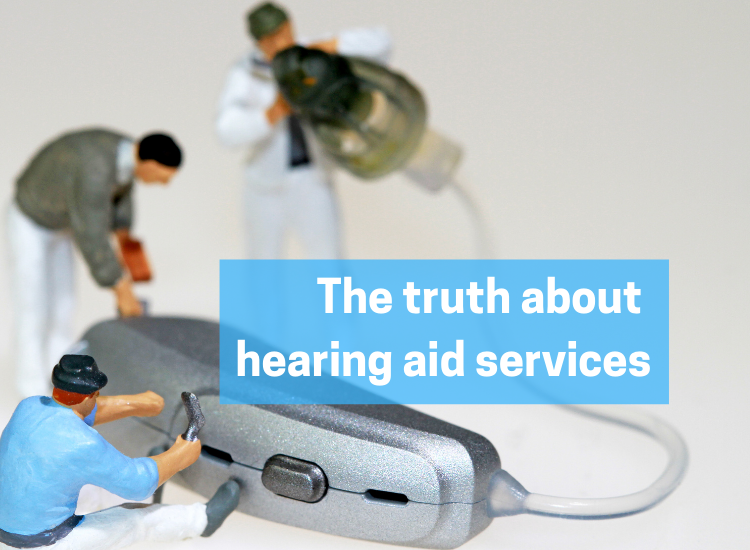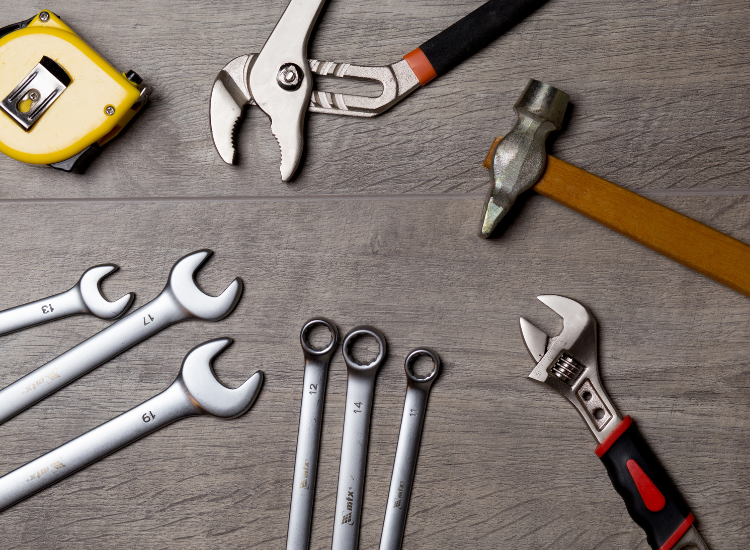
Starkey – App’s & Accessories
February 3, 2021
Hearing loss in different ages and stages of life
June 29, 2021A hearing aid ‘service‘ might not always be a ‘service‘… be sure to educate yourself!

Hearing aid servicing is a tendency that has become very common in the past few years and hearing healthcare professionals often recommend annual or even bi-annual servicing of hearing instruments.
Is this really necessary and what exactly does servicing entail?
Is it really necessary?
Hearing instruments often start functioning less optimally after some period of time. Reasons for this often involve moisture in the system, wax build up in the system and other potential electronic faults. It might very well be that the hearing instrument still switches on and amplifies sound, but it might have a slightly lower output than prescribed due to a technical fault. In cases such as these, faults are often missed. During full proper service, these technical issues are often identified and corrected.
 What does servicing entail?
What does servicing entail?
Hearing aid servicing generally entails a visual inspection of the unit, and correcting obvious damage / blockage and dirt build up on and inside the instrument. Replacement of scratched housing or casing are often also included in a service. Faulty battery doors are replaced, and rusted battery contacts are replaced / cleaned. Hearing instruments also undergo technical assessment to determine whether the device is working according to technical specification, aspects assessed includes: Output of instrument per frequency band, microphone, amplifier and receiver (speaker) capability to provide clear amplification. The firmware / software of the hearing instrument is often updated (similar to a smartphone). The outcome of an in depth service is ensuring that the instrument works 100% according to specification, as a brand new instrument would, not just the cleaning and visual inspection of the instrument.
Very important to note is that some manufacturing companies have been changing the way that they do services to ensure affordability, as well as a very quick turnaround time. A service exchange system has been put in place in many cases, which means that your instrument is sent in for service, and you receive a refurbished instrument back, with a different serial number. Refurbished implies that all faulty components in the instrument have been replaced with refurbished, repaired or new components – with the end goal, a fully functional, good as new instrument. This refurbishment process is an approved process, and is not new to the world of electronics as it has been done for years in other fields. Suppliers that provide the option of a service exchange with a refurbished instrument, do have the option (should you opt to do so) to work on your original instrument – this often takes longer.
What should I be on the lookout for?
- Hearing aids carry a manufacturer warranty – anything from around 1-3 years (in some cases an extended warranty can be added). This warranty is typically voided when any other company than the supplying or manufacturing company works on the instrument.
- One may come across advertisements stating that they will service your instrument free of charge – these services are often just a visual check and clean of the hearing aids, since performing a full service requires specialized equipment, staff and takes time. You might receive your hearing aid back squeaky clean – but still not in 100% working condition!!
- A common marketing trend is to advertise a “mini service” – which is great to do – but note that this is often also a simple cleaning of the instruments, which you can often do yourself, at home!
- A full service entails that an instrument is sent to the original manufacturer as they solely has access to all the electronic components that need replacement.
- A hearing care outlet that works with limited hearing aid brands, often do not have access to send your instruments for a full service, be sure to check whether they have a working relationship with the supplier of your hearing aids.
- You can ask for a service report from the hearing care professional, and it should be official documentation from the manufacturing company.
The best is to make an informed decision about your hearing care professional that you choose to have your instruments serviced with. Knowledge is power – inform yourself before being blinded by empty marketing promises.
Think about it this way… When you take your car for an oil and water check at the garage down the road – that is not seen as a service, but more maintenance. A full service at the garage that run diagnostics in depth is classified under a full service. Very similar with hearing aids – cleaning and changing filters are like checking your oil and water on your vehicle!
Kindly contact us if you need any information!



